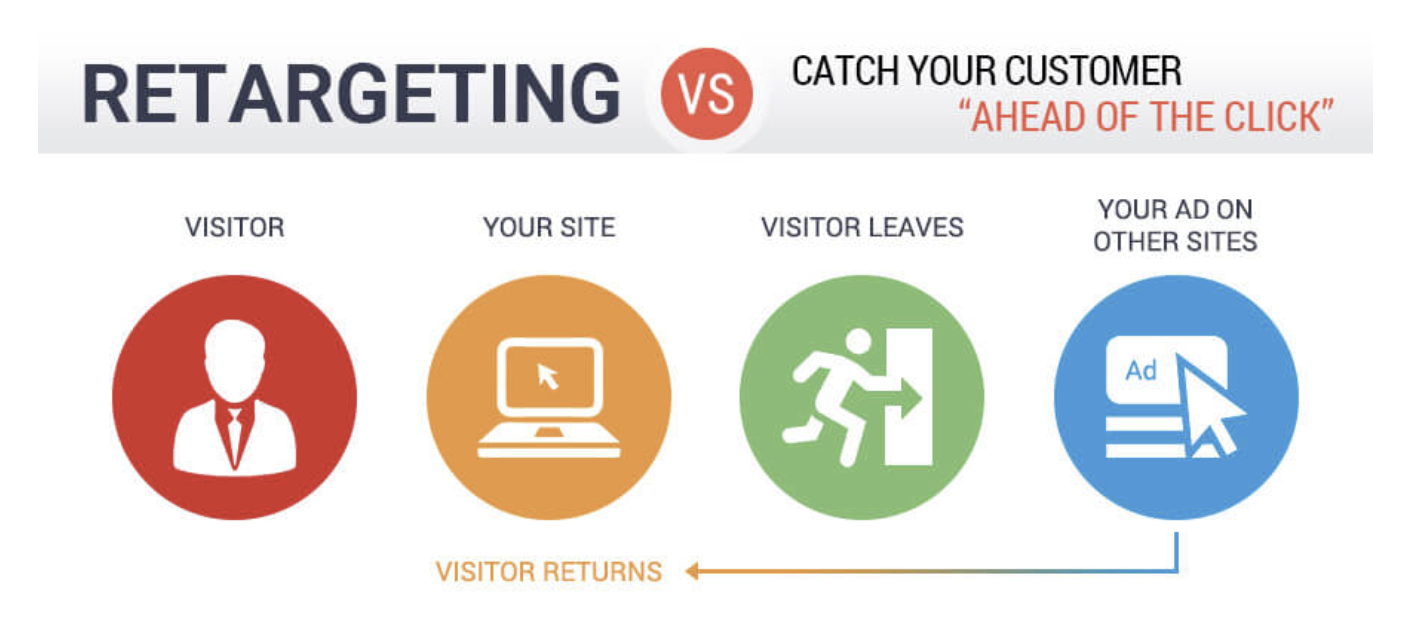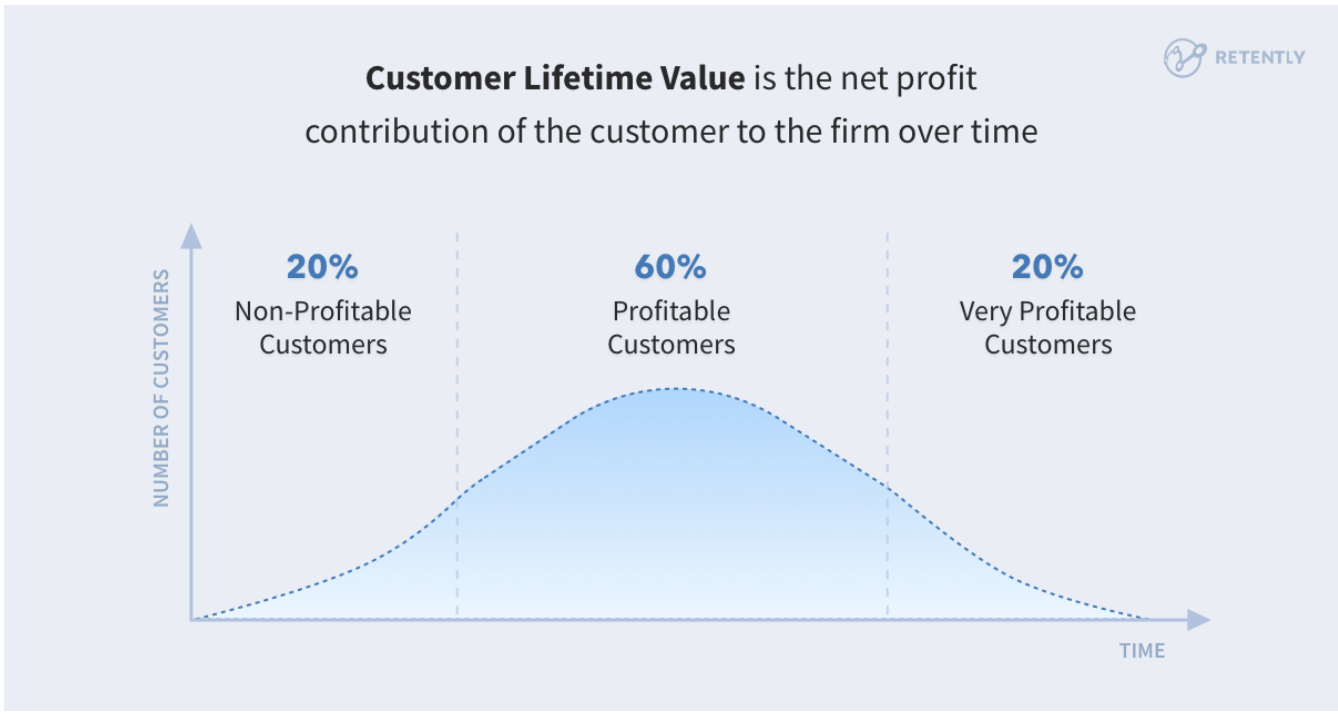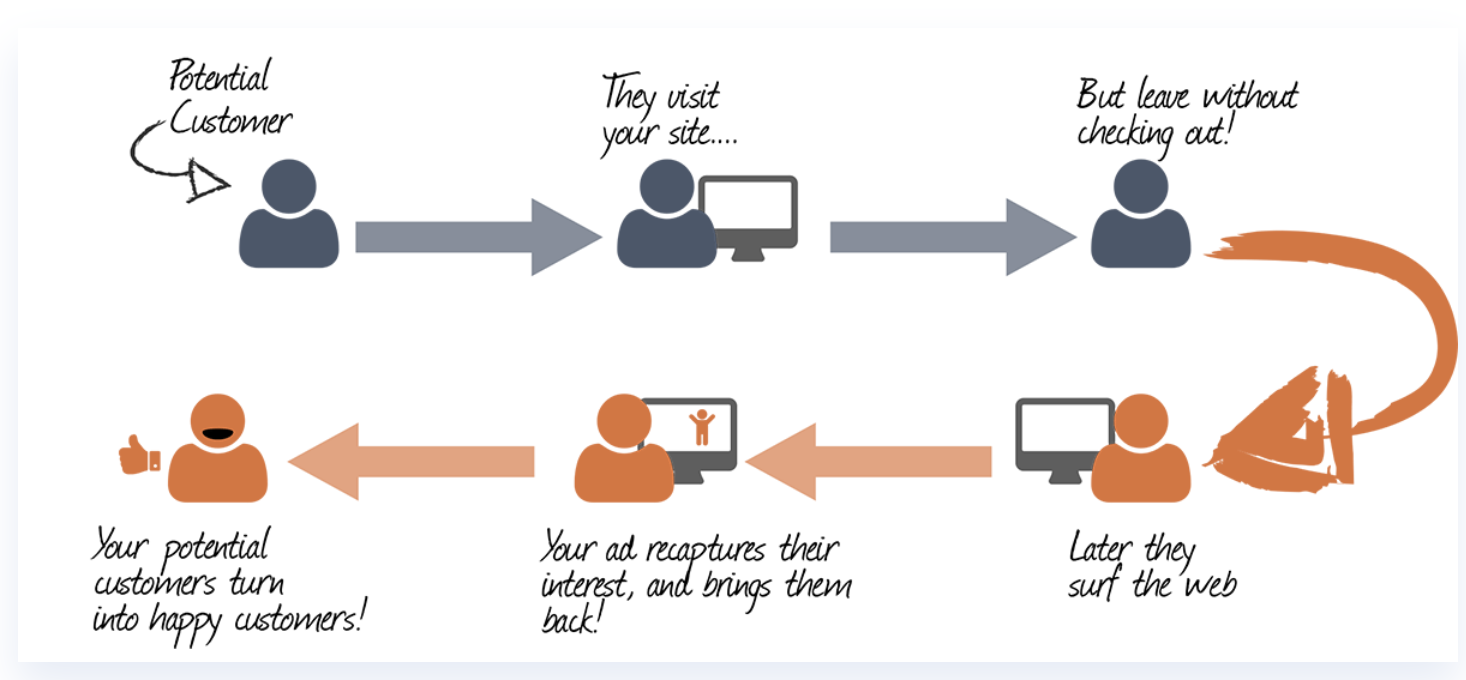Doesn’t it annoy you when a buyer is already in the checkout stage and decides to exit your site?
This isn’t an isolated case. Over 90% of first-time website visitors leave the website without converting. Unless you do anything, they’ll be lost potential forever.
The good news is, there’s a way to bring them back. Retargeting is the solution to that problem.
You might ask:
- What is retargeting?
- How does retargeting work?
- Why is it important?
- When should I do retargeting?
- What retargeting strategies can I work with?
By the end of this post, you’ll be able to learn the tips and tricks on how to leverage the retargeting strategy to bring back visitors and make them convert.
Let’s get right to it.
What Is Retargeting?
Retargeting is the strategy of delivering personalized ads to website visitors who left without converting, reminding them of products or services you offer. It’s one type of marketing to help your business.
It’s part of programmatic advertising where online ad spaces are sold through real-time bidding.
After a visitor reads content or adds a product to the cart without any actual conversion, retargeting campaigns using Google Ads, Facebook retargeting, and other retargeting advertising platforms are done to remind them of the product or the brand.

Source: SingleGrain
This strategy is widely used by serious marketers to connect with customers, build loyalty, and increase sales.
Building loyalty is part of the retargeting goal because as said earlier, it’s unlikely for a first-time website visitor to make any purchase. Retargeting helps previous visitors know your website better.
This is great if you’re offering services that are quite new to the public like a social inbox- a new social engagement tool. Retargeting will help the potential audience get to know your services better.
A marketing rule of thumb of retargeting says a potential customer should see your brand or hear your message at least 7 times before they make a purchase decision. The more visibility, the more trust is built on visitors who already expressed initial interest in your products.
This brings us to the next question: how does it work?
How Does Retargeting Work?
- A brand puts a snippet of code called a retargeting pixel on the website.
- For every website visitor checking the product, service, or blog page, a pixel is downloaded that collects data as pages visited, time spent on a page, location, This makes up their customer profile that’s kept by an ad network.
- A retargeting cookie is also placed on the visitor’s browser so you can follow them around the web, leaving crumbs as it were.
- When the visitor visits other sites, the cookie prompts an ad network like Google Ads telling it the visitor previously visited your website and viewed this and that product.
- The ad network then serves ad campaigns to the visitor that’s related to what they’ve engaged in your website so they keep getting reminded of your brand and products.
In basic terms, retargeting happens when a person visits a website and they’re followed around by ads of that brand around the web to increase the chances of them returning to the website and deciding to make a purchase.
Why Retargeting Is Important
Retargeting is important because it’s an unmatched strategy when it comes to audience targeting. Though standard funnels work, they can be quite impersonal. A one-size-fits-all approach will only do so much.
Before retargeting, marketers bid on ad spaces on places they assume visitors usually frequent. It’s largely reliant on inherent assumptions about the target audience. An example would be if you’re an online ordering system for restaurants, you can’t simply assume all the restaurants are your target audience.
But with retargeted ads, you already have a level of a surety you’re targeting the right people because they already showed initial interest by visiting pages of your website and even adding items to the cart.
Say you’re a growth hacking business looking for clients. You can retarget visitors who already read your top growth hacking agencies blog since you already know they’re considering working with an agency.
According to Connectio, there’s a 76% chance of retargeting ads getting clicks when compared to regular ads.
Here are some more retargeting statistics:
- 3 out of 4 previous visitors notice and engage with retargeted ads
- 92%-97% of customers don’t purchase on the first website visit, hence the need to follow them around to get them back in the funnel when they’re ready to convert
- Leveraging the retargeting strategy with other channels like conversation commerce will result in 50% more sales in a high time customer lifetime value.

Source: Retently
With these statistics, it’s safe to say retargeting supercharges your business’ marketing ROI.
So a simple breakdown of the benefits of retargeting will be:
- Effective reminder for visitors about the brand and its products and services
- Boost website revisits when the customer is baited effectively to learn more about the brand
- Increases revenue when previous visitors are given another chance to decide to buy
- Reduces competitor’s ads reach so you can win over sales. Say you’re a new video streaming software like Everytale competing with more established brands, you’ll need retargeted ads to get considered instead of the more widely used ones.
The question now is: when’s the best time to do retargeting campaigns?
When Should You Do Retargeting?
Here are 5 instances when you should do retargeting campaigns.
- Build Brand Awareness – retargeting campaigns should be done for potential customers who still need an extra nudge to convert. At this point, they usually need time and reason to trust your brand. The more they see your brand around, the better they’ll know you, and ultimately, they’ll have more reason to trust your brand. Say you’re an affiliate tracking software only a few know about, seeing ads for your brand will build trust.
- If Your Website Has At Least 100 Monthly Visitors – these are not hard and fast rules because it also depends on the niche you’re in. Some niches have larger target audiences than others. But the sweet spot is around 100-500 monthly visitors, when you reach that figure, you can start creating retargeting ads. The point here is you won’t be wasting time creating campaigns for only a handful of people.
- Promoting New Collection – previous website visitors are a great set of audiences to target when advertising a new collection. They probably trust your store by now but feel like the current products you have don’t fit them. But the new collection might have what they’re looking for especially when a certain event is coming up. Say there’s an upcoming Halloween costume collection that’s up for grabs. It’ll surely be an eye-catcher that’ll lead them back to the virtual doors of your store.
- Boosting Bestsellers – you might think top-selling products don’t need any more promotion, but they do. It could be a top seller for those who knew about it, but not for those who don’t have a clue how awesome they are. Getting the word out about how good the product is might be the nudge visitors need to finally make a purchase especially if it’s something they already considered buying.
- Moving Inventory – a slow-moving inventory can be a real pain. Creating retargeting campaigns for these kinds of items is a low-effort way of introducing them to your audience.

Source: Instapage
5 Retargeting Strategies You Can Try
Segmenting Your Visitors
Like I’ve said at the outset, retargeting is great because they’re personalized ads implying it resonates with visitors better. Segmenting your visitors helps you target them better according to where they are in the buyer’s journey.
Take someone who’s visited your site multiple times with multiple items already in their carts. They’re past the awareness stage and consideration stage and are now ready to decide to buy. Retargeting awareness ads for them won’t do any good.
Or if they are still at the level of building trust, reading content now and then, pushing decision stage ads for them will be too early.
Segmenting means you’re targeting your audience at the right stage. This means higher chances of resonating with them and moving them to action eventually.
You can do this with web retargeting, web push notifications, or dynamic product ads on Facebook.
Retargeting Specific URL Visits
Broad retargeting isn’t going to boost progress in the buyer’s journey and conversions. So it’s good to target specific website URLs.
It’s almost similar to segmenting your visitors, only with this instead of perceiving them in terms of the buyer’s journey, you segment them in terms of URL.
Like segmentation, this narrows down your audience so they can receive the most relevant ads campaigns for them. The more relevant it is, the more chances of them actually clicking on the ad.
Say you’re running blog content. You can retarget based on which blog post a visitor reads. Say the website is about website security and the visitor is interested in the best password managers. It gives you a clue of their interest so you know you’ll be promoting password managers to that visitor.
Another great example of this is if you offer multiple products within a niche, say a graphics software website with specific software for infographics, flowcharts, and timelines maker, targeting the specific product page URL will help you push the right ads to what the visitor is specifically interested in.
Demographic Targeting
Demographic targeting is also almost similar to segmenting visitors, however, with this you target based on gender, age, and location.
With this, you’re targeting profile information instead of behavior.
The data you gather here will also be helpful for any social media marketing efforts you are doing.
Exclude Converted Users
Unless you’re promoting a new collection or moving inventory, it’s best to exclude converted users from ads they’ve most likely seen before. This lessens the chance of seeing you as an annoying brand.
But this doesn’t mean you stop retargeting them. It’s been reported that loyal customers spend 68% more than first-time customers. You still target converted users with ads about what they are already checking out, ads on giving them a discount code, or an ad about another incentive you can offer.
A great example of this is if you’re advertising a one-service website like one offering a predictive dialer and nothing more. If the visitor is already converted, you can push blog promotion ads or referral incentive ads to this person.
Or if you’re offering expert services like web development, having a discount code for your next transaction will likely move the client to do business with you again.
Simply said, just avoid showing them the same ads again and again. Add this to your list of marketing errors to avoid.
A/B Testing
Lastly, it’s best to test out a few variations of your campaigns, at least 3 will be good enough. Granted, there are statistics and industry standards that set you in a certain direction but the best data is what you collect from your actual audience.
Test out scroll stoppers, copy, or call-to-actions, one element at a time while other elements are constant so you can get accurate data of what works best.
Conclusion
Retargeting campaigns is not something you want to overlook if you want the best ROI potential for your brand. It’s readily available accurate data about your target audience, it’s such a waste if you don’t take advantage of it.
Try one strategy at the right time and the right stage and see the difference it makes in your ROI.
Author Bio

Christian Cabaluna is a finance blogger at awesomex™ with 5+ years of first-hand experience. When he is not writing in his favorite coffee shop, Christian spends most of his time reading (mainly about money-related topics), cooking, watching sitcoms, visiting beaches, and catching beautiful sunsets.
















